Dalquharran Castle, located in South Ayrshire, Scotland, is a category A listed building designed by the renowned architect Robert Adam and finished around 1790. The property has a rich historical background, with the first recorded lord being Gilbert Kennedy, as mentioned in a 1474 Charter for the nearby Crossraguel Abbey. The estate, which already included a castle at that time, remained in the ownership of the Kennedy family for many centuries. The castle, with its impressive architecture and historical significance, stands as a testament to the legacy of the Kennedy family and the work of Robert Adam.
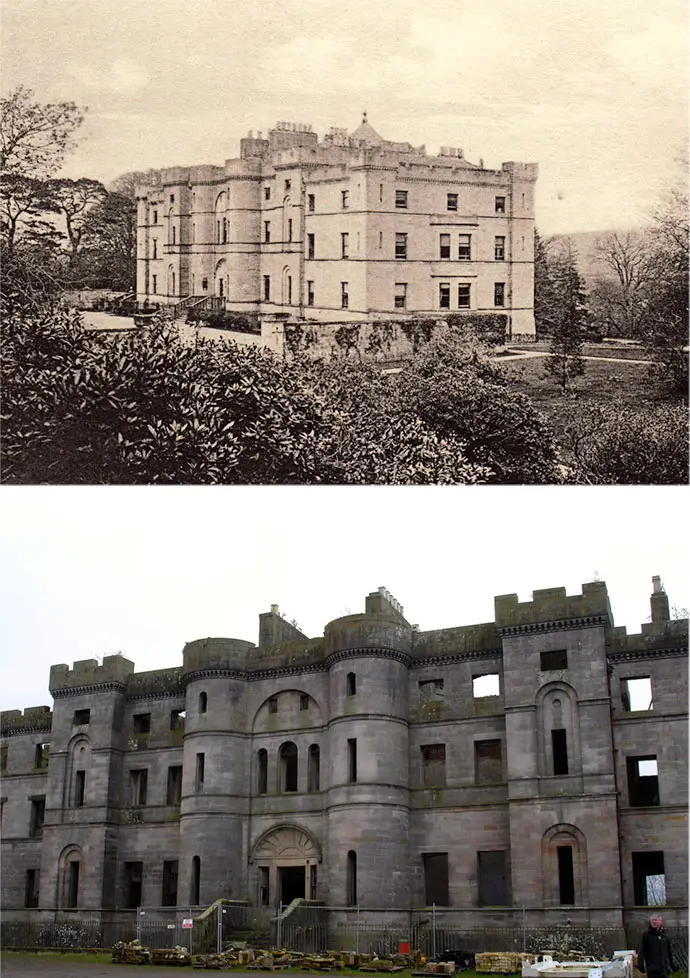
The Dalquharran Castle property is situated near the village of Dailly, a few miles inland from the Firth of Clyde on the western coast of Scotland. It is positioned between Girvan and Turnberry, approximately 16 miles (26 km) southwest of Ayr. The estate encompasses two structures referred to as “castles.” The old castle was abandoned around 1800, while the new castle, which is more accurately described as a mansion, remained habitable until the 1960s.
The south façade of the new castle offers views overlooking the north bank of the Water of Girvan. It’s important to note that the new castle should not be confused with the nearby ruined Old Dalquharran Castle. The new castle, completed in 1790, has also fallen into a state of ruin since the removal of its roof in 1967, a measure taken to avoid local taxation. Despite its current condition, the property retains historical significance and continues to be a part of the landscape near Dailly.
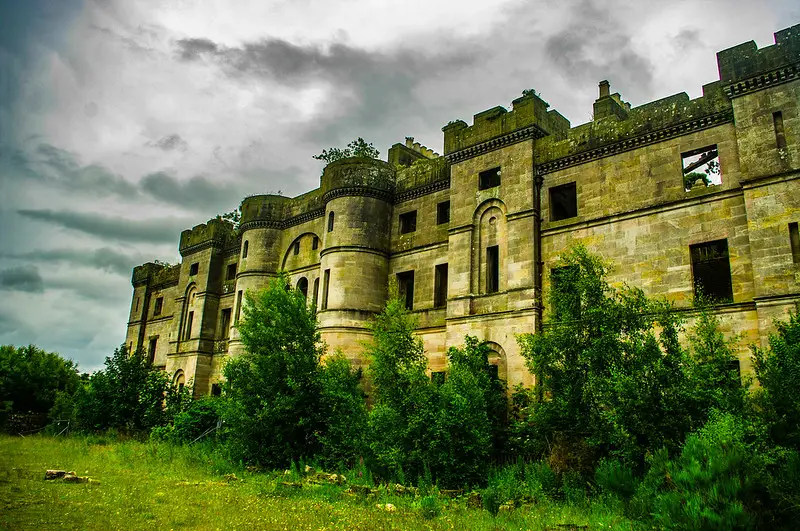
The estate, including the old castle, was acquired in the late 17th century by Sir Thomas Kennedy of Kirkhill, who was also the Lord Provost of Edinburgh. His son, Thomas Kennedy of Dunure, occupied the estate. Over the years, the old castle has been known by various names, including Dalqhrin, Dahuharra Castle, Old Place of Dalwharn, and Dolquharran. Thomas Kennedy of Kirkhill also purchased Dunure Castle and its estate. Thomas Kennedy of Dunure, who was the husband of Robert Adam’s sister, commissioned Adam to design a new castle as a country mansion, a project that took place around 1785 to 1790.
The newly designed castle by Adam was structured symmetrically around a central entrance hall, featuring a top-lit central spiral staircase similar to the one at Culzean Castle, which Adam had designed for David Kennedy around 1776. The house comprised four floors, with bedchambers on two of the floors. The interior boasted classical decorations, while services were located in the basement. A round bastion turret in the south front housed a drawing room on the ground floor and a library above, offering scenic views over Girvan Water. The east wing on the ground floor featured a large oval dining room.
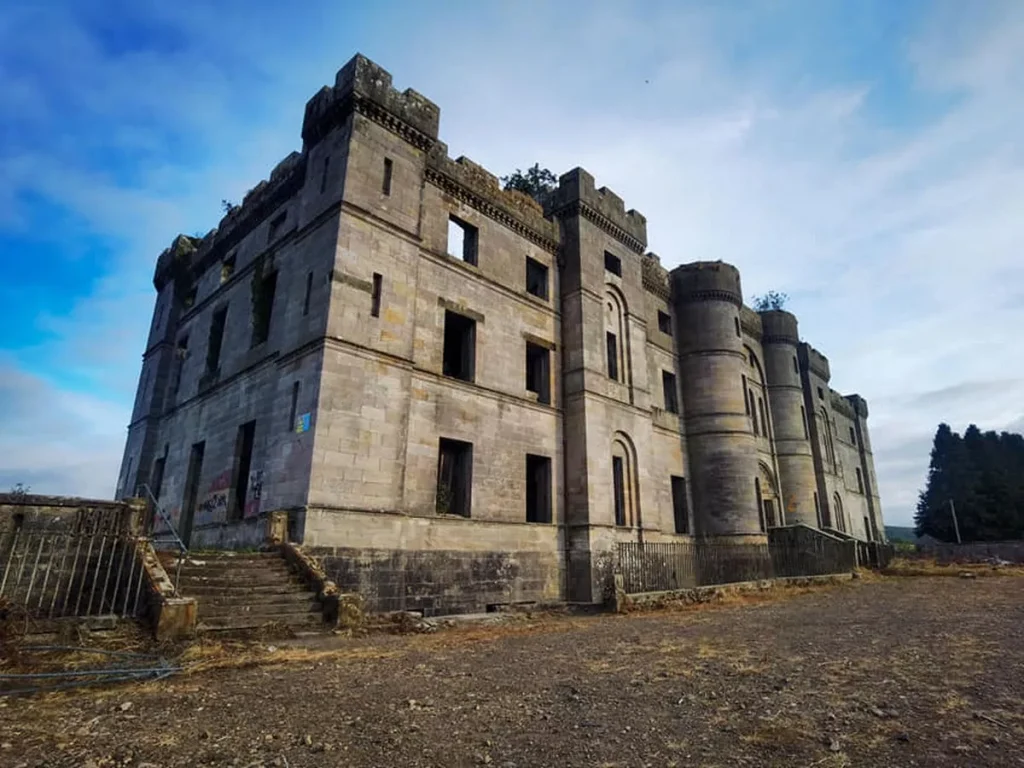
Upon the completion of the new castle in 1790, Thomas Kennedy moved out of the old castle, which was subsequently abandoned and now stands in ruins about 300 meters southeast, closer to the river. The old castle, known as Dalquharran Castle, became a listed monument in 1935. Described as “the remains of the old castle of Dalquharran,” it is noted for surviving as substantial standing structures with buried archaeology, including outer defenses and infrastructure. The report indicates that the old castle was originally a rectangular keep, later greatly enlarged and converted into a “stately castle” around 1679.
Adjacent to the castle’s north, Adam designed an extensive low stable range connected at either end to the main building by screen walls with gateways, creating a forecourt. The outbuildings, constructed in a simpler style than originally designed by Adam, possibly occurred after his death in 1792. The forecourt includes several small lodges arranged symmetrically around the court.
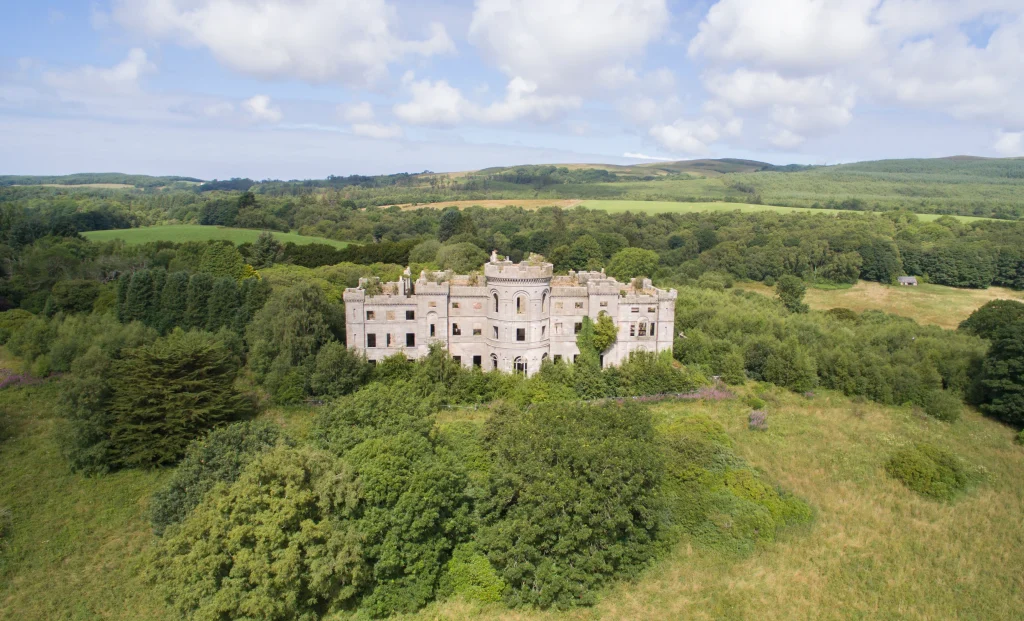
Dalquharran Castle underwent significant extensions from 1880 to 1881, led by Francis Thomas Romilly Kennedy, the grandson of Thomas Kennedy who passed away in 1819. This expansion was necessitated by the growing family of Francis Kennedy, who had nine children. The additional wings, designed by Wardrop and Reid of Edinburgh, were constructed in a style similar to the existing castle.
The cost of these extensions nearly led to financial ruin for the Kennedy family, prompting them to frequently let the castle and estate from the late 19th century onward. Notably, in the winter of 1904–1905, the castle was rented by H. H. Asquith, a prominent political figure. Ettie Grenfell, a family friend, documented a weekend at Dalquharran in her journal, and it is suggested that Dalquharran served as the inspiration for the house Huntingtower in John Buchan’s 1922 novel.
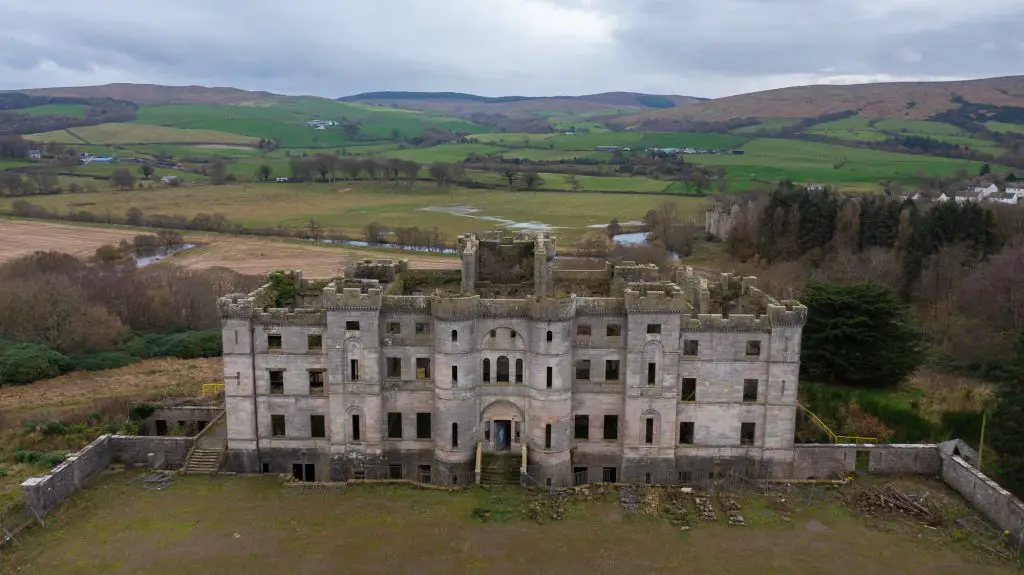
The property changed hands in the 1930s when the Kennedy family sold it to a timber merchant. The Scottish Youth Hostel Association leased the castle from 1936 to 1939, and during the Second World War, it was occupied by the evacuated Glasgow Deaf and Dumb Institution. After the war, the estate was sold to John Stewart, a produce merchant, who resided in the new castle and farmed the estate. Eventually, due to its size and maintenance costs, the castle was abandoned. In 1967, the lead roof was removed to declare it uninhabitable, allowing the owners to avoid paying rates.
Dalquharran Castle received a category A listed building designation in 1971, described as a “castle-style mansion by Robert Adam, circa 1790.” Although the interiors were in good condition in the late 1960s, recent photographs from early 2017 confirmed that the interiors have deteriorated into total ruin, with entry being prohibited for safety reasons.
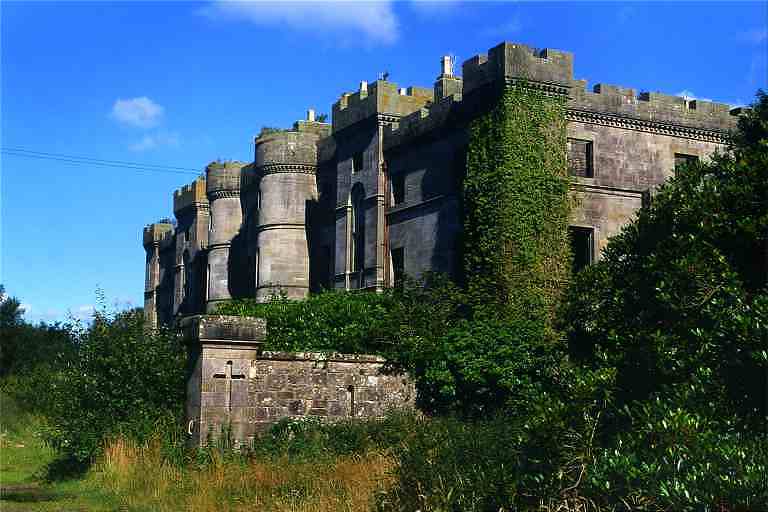
In 1990, outline planning permission was granted for an ambitious redevelopment of Dalquharran Castle, including plans for two golf courses, a hotel, conference center, country club, and hundreds of holiday homes. However, no progress was made on these plans. The property was subsequently sold to developers in 2001. Further planning permissions were granted in 2004 and 2009, but these were for less ambitious schemes focused on converting the castle into a hotel.
In June 2014, a request for consent to build 60 dwellings and 5 fractional houses on the estate was conditionally approved. Interestingly, by this time, there was no mention of the original plan to convert the castle into a hotel. However, none of the proposed buildings planned since 1990 were ever constructed.
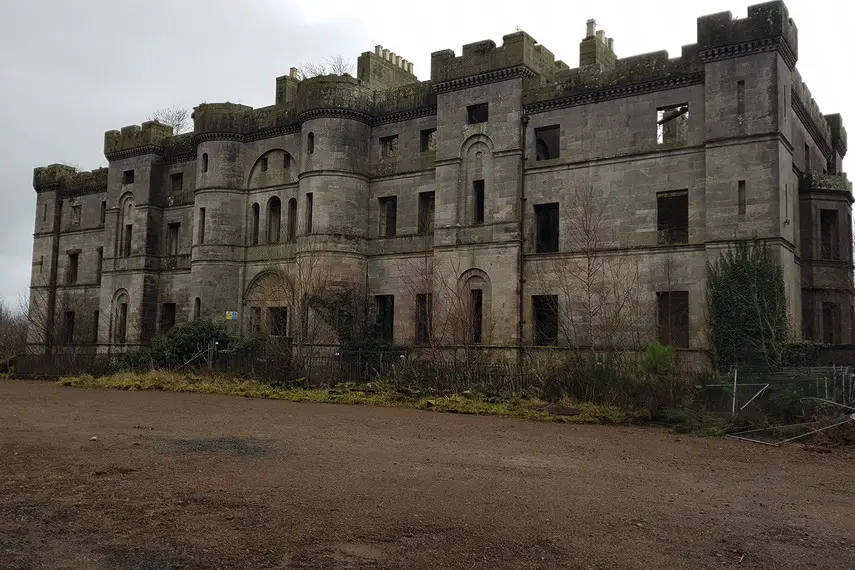
In June 2019, the entire 261-acre estate, including the medieval ruins of Dalquharran Castle, the Dalquharran Mansion House, productive farmland, mature woodland, and various development opportunities, was put up for sale at a guide price of £800,000. The property was owned by Kezia DCM Ltd, a property development company. The sale listing included reference to several derelict and semi-derelict buildings on the estate, such as the remnants of a cottage and former byre, the stable, stone farmhouse, and stone outbuildings.
RECOMMENDED: Abandoned Hořín Chateau – Stunning History Of This Place